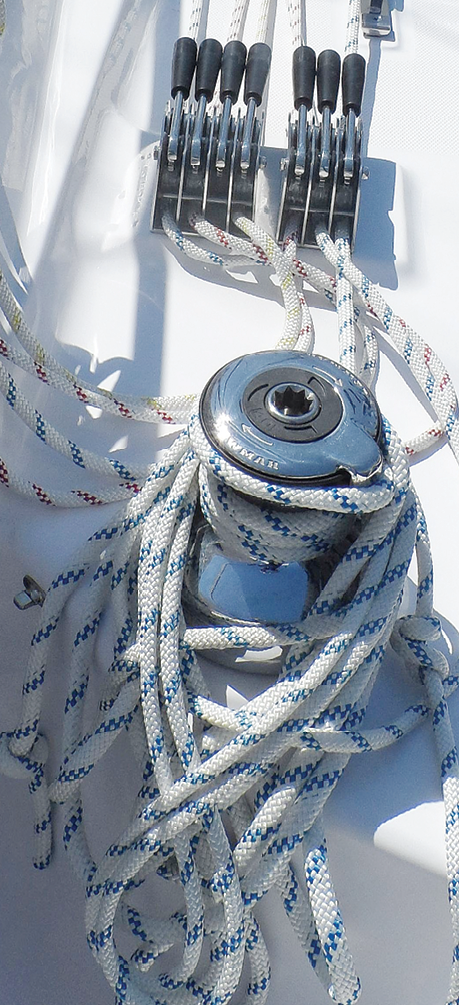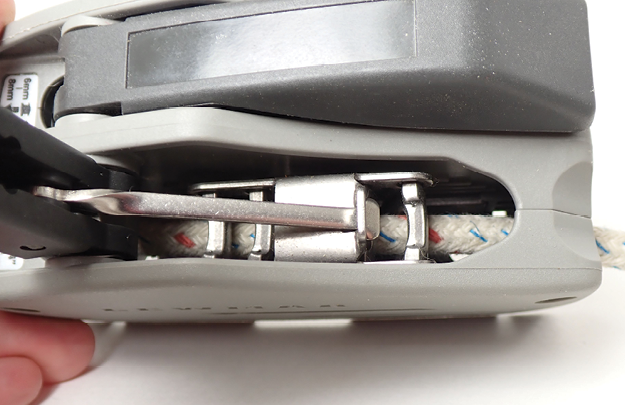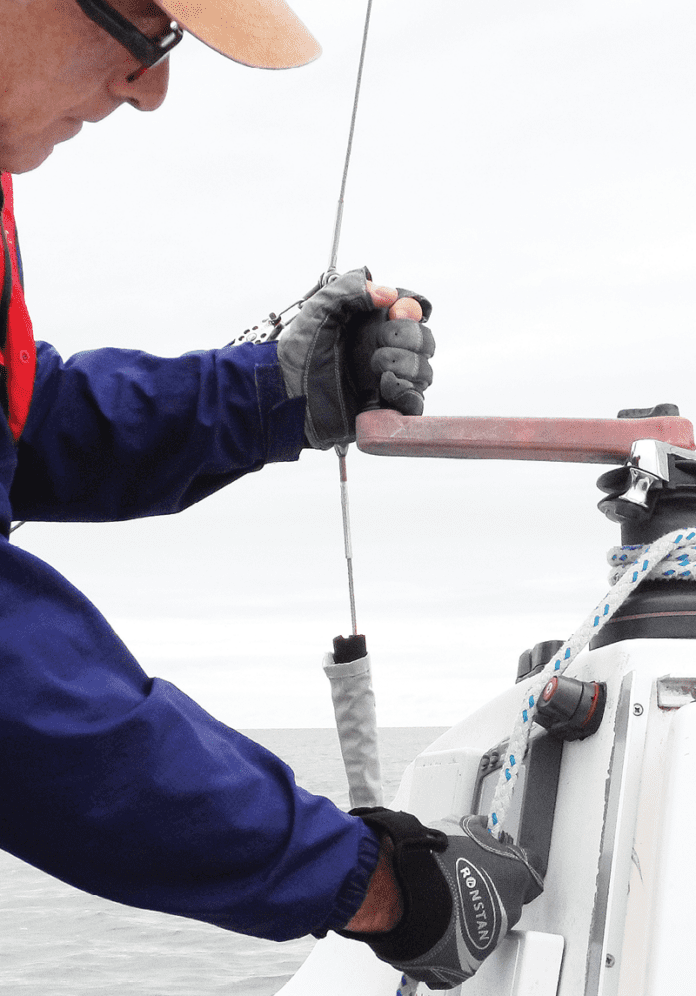We’ve seen as many as seven jammers feeding just one poor, overworked winch. This is a pretty serious case of “over jamming” and will make some operations that require simultaneously pulling and releasing multiple lines—like reefing a mainsail—awkward or just impossible.
Downstream of the winch a cam cleat will do just fine. In fact, it has a number of advantages over self-tailers and only one disadvantage.
ADVANTAGES OF CAM CLEATS
• A cam cleat will fit a wider range of rope diameters. On our F-24 we use the secondary winch for everything from ½-inch reacher sheets to 1/4-inch barberhauler lines. Although the self-tailing winch is supposed to take 1/2-inch to 5/16-inch, we had to downsize from 1/2-inch to 7/16-inch to perform best in the self-tailer. And any lines smaller than 3/8-inch tended to jam at the line-stripper rather than smoothly feed into the cockpit. A cam cleat easily handles the full range.
• Sufficient tension capacity. If you have enough turns around the winch to grind without slipping you are well within the 150-pound capacity of a cam cleat. They hold more securely than the self-tailer.
• If angled properly, cam cleats can be released instantly from anywhere in the cockpit. This is great for gusty conditions. Release can be stubborn if there are too few turns on the winch.
• Cam cleats are faster to use. There is no need to wrap the rope into the jammer jaws, and there is one less turn to throw off during a tack—and no pesky stripper horn to grab the line. If you need to grind in just a little line you simply pull the tail through the cam cleat as you grind, without releasing. To ease, there is no need to unwind the rope from the self-tailer, just snap the tail out, ease, and re-cleat (a ¼-turn with the handle might be needed to unload the line enough to get it in the cam cleat).
DISADVANTAGES OF CAM CLEATS
• You need to hold the tail while grinding. Of course, if you just tacked, you are already holding the tail, since you just hauled it in by hand.
We’ve installed cam cleats downstream of all sheet winches on our last two boats (in fact, most were factory installed) and we love them. The sheets spend as much time in the cam cleats as they do in the self-tailers, and we use them on nearly every tack.
Traditionally, jam cleats and conventional cleats were used, but they are even slower to load and much slower to release. Conventional cleats are an anachronism, unless they really look nice on your boat.
1. With a cam cleat you can go straight from hand-hauling to grinding.

2. If you need seven rope clutches to serve one winch, it’s time to consider adding another winch.

3. Any slippage on a halyard winch will affect performance. A Dyneema downhaul can help keep the luff taut (see “Webbing Uses for Sailors,” PS November 2019).

4. In our testing, Lewmar tilt-tile design clutches like this D-2 consistently score high for their grip.











































